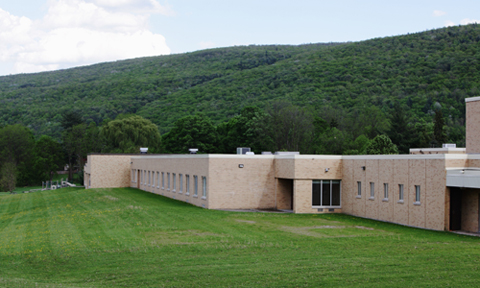Many states have fallen behind in providing funding, implementing policies, and placing a high priority on improving rural and small-town schools—led by Mississippi, Alabama, South Carolina, North Carolina and Arizona—according to the new biennial Why Rural Matters 2013-14 report from the nonprofit Rural School and Community Trust.
“This is a biennial report detailing the health of rural education in the United States and has an intended audience of media, educational policy makers, and districts,” notes co-author Dr. Robert Klein, Associate Professor of Mathematics at Ohio University. “Using U.S. Census and NCES data, we profile each state’s rural education health and provide a starting point for discussion on issues related to socio-economics, educational policy, outcomes, and more. For instance, Ohio has the nation’s fourth-largest rural student population. Maine is, in terms of education, the most rural state in the United States, while Nevada is among the least rural. The goal of the document is to generate honest discussion about the complexities of educating the nation’s students in rural areas and to focus attention on real solutions as opposed to expedient and often fruitless ‘patches.'”
“I’m very pleased to be co-authoring this particular edition of the report with the math department’s Visiting Professor and recently-minted Ph.D., Dr. Daniel Showalter,” Klein adds. Showalter graduated from the Patton College of Education in May and presented the results at the Education Writers Association meeting.
More Children in Rural Areas, Small Towns, Need Access to High-Quality Education
The 50-state report, released May 19 at the Education Writers Association national conference in Nashville, shows some states have taken steps to address rural education issues, to varying extents—including Kentucky, New Mexico, North Dakota and Oklahoma. But many of those states still rate among the nation’s lowest on a variety of rural education measures.
This research series focusing on K-12 education was launched in 2001, and the seventh edition is unique because it includes findings regarding rural early education. Principally, many states do not offer adequate access to high-quality preschool programs for rural low-income families and children.
“We must place a greater priority on providing the resources and programs to narrow the opportunity gap between rural students and the rest of the nation’s children,” said educator Dr. Doris Terry Williams, Executive Director, Rural School and Community Trust, a nationally recognized community and education activist residing in rural North Carolina. “Unfortunately, this most recent edition of Why Rural Matters indicates that little or no progress has been made in many states and, in fact, we’re backtracking in too many rural communities.”
The report also finds that the nation’s population of rural schoolchildren is growing at a faster rate than those in urban and suburban areas, by about 137,000 students from 2008-09 to 2010-11, based on the latest federal data available. Demographics of rural students also continue to change, with diverse racial-ethnic groups moving into more rural areas. For example, the number of nonwhite rural students increased by more than 120,000, while the number of white rural students increased by approximately 10,000. The Hispanic student population has more than doubled in rural areas in the past decade.
“The growing population diversity of rural students creates many opportunities and challenges that schools must embrace through community engagement, teacher professional development, and innovations in practice that are student-focused regardless of their background,” Williams said.
According to Dan Showalter, Ohio University, a member of the research team with Jerry Johnson, University of North Florida in Jacksonville, and Bob Klein, Ohio University, “Based on the trends evidenced by our research, the rural student population will continue to become more diverse, multicultural, and representative of all parts of the world.”
Highest-Need Priority States: Mississippi, Alabama, South Carolina
Mississippi is the highest-need priority state as measured in the report. It scored in the national top six among the neediest states on four of the five Why Rural Matters gauges, including first in socioeconomic challenges of rural students, third in educational outcomes for rural and small-town students, fourth in rural education policy needs, and sixth in the importance of rural issues to the overall well-being of the state.
Alabama is the No. 2 highest-need priority state. It scored in the top five nationally on three of the five gauges, including third in rural education policy needs and fifth in both socioeconomic challenges and educational outcomes for rural students.
South Carolina is the No. 3 highest-need priority state. It scores in the top eight on two of the key gauges in the report: socioeconomic challenges and diversity of rural students. In addition, other southern states score in the top 10 overall highest-need priority states, including Tennessee (sixth), Arkansas (tied for eighth) Georgia (tied for eighth) and Florida (10th).
The 10 highest scoring states in rural education largely follow the nation’s higher average family income and investments in education. Massachusetts (49) is first, followed by Connecticut (48), Rhode Island (47), Maryland (46), New Jersey (45), New Hampshire (44), Minnesota (43), Wisconsin (42), Vermont (41), and New York (40.)
NOTE: Because Hawaii operates as a single school district, there is no data available for “rural districts” and thus lacks rankings on three gauges and the overall priority. The exceptions are indicators where data is taken at the school level (i.e., it is possible to separate rural schools from non-rural schools in the state).
Looking at the highest priority states under each gauge:
- Maine rates highest for the importance of rural education to the overall performance of the state. The top five included Vermont, South Dakota, and Oklahoma, but also North Carolina, which has multiple large metropolitan areas.
- For the most diversity among rural families and students, Florida rates highest. Colorado is second. The complexion of rural America is definitely changing. Arizona, Oklahoma, and Texas made the top five.
- Florida also is highest among states most in need of policy changes to improve rural education. Arizona, Alabama, Mississippi and Texas are in the top five.
- For educational outcomes of rural students, New Mexico was the highest priority state. The top five included West Virginia, Mississippi, Alabama, and Hawaii—which has schools in rural and remote areas across its islands.
The Rural School and Community Trust is a national nonprofit organization addressing the crucial relationship between good schools and thriving communities. Its mission is to help rural schools and communities grow better together. Working in some of the poorest, most challenging places, the Rural Trust involves young people in learning linked to their communities, improves the quality of teaching and school leadership, and advocates in a variety of ways for appropriate state and federal educational policies, including efforts to ensure equitable and adequate resources for rural schools.
The Rural School and Community Trust extends appreciation to the Monsanto Fund for providing financial support to publish Why Rural Matters 2013-14.





















Comments